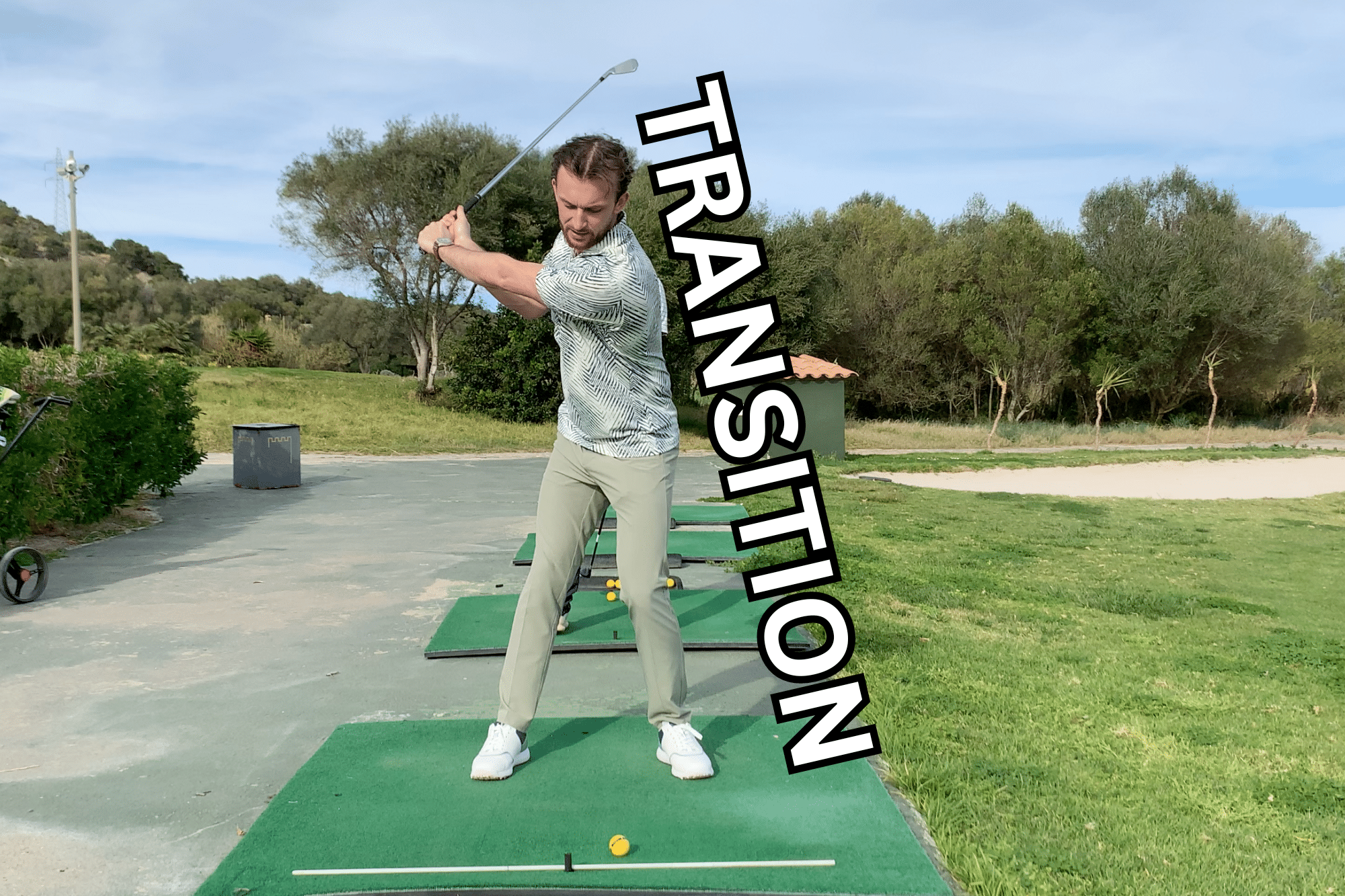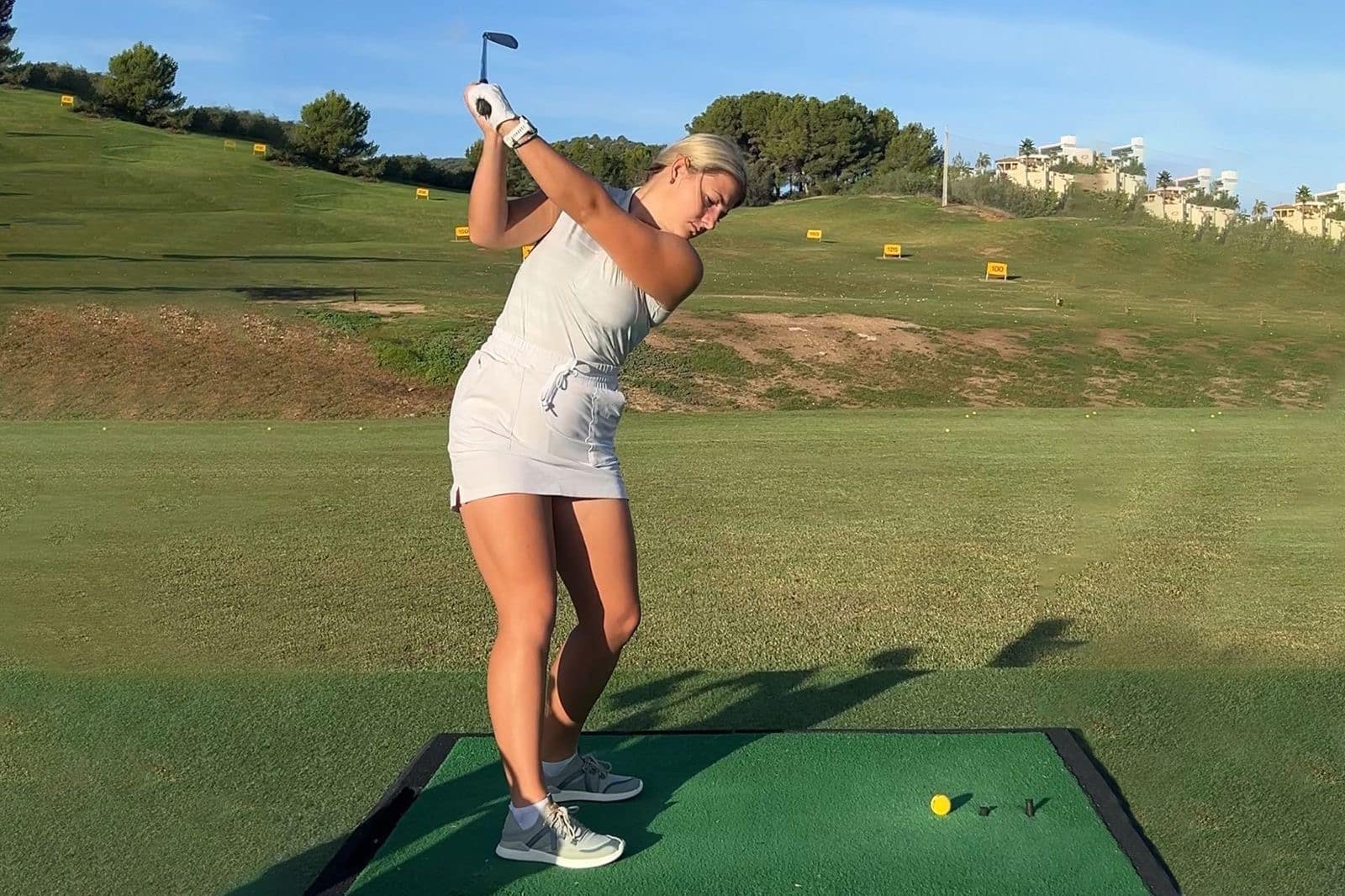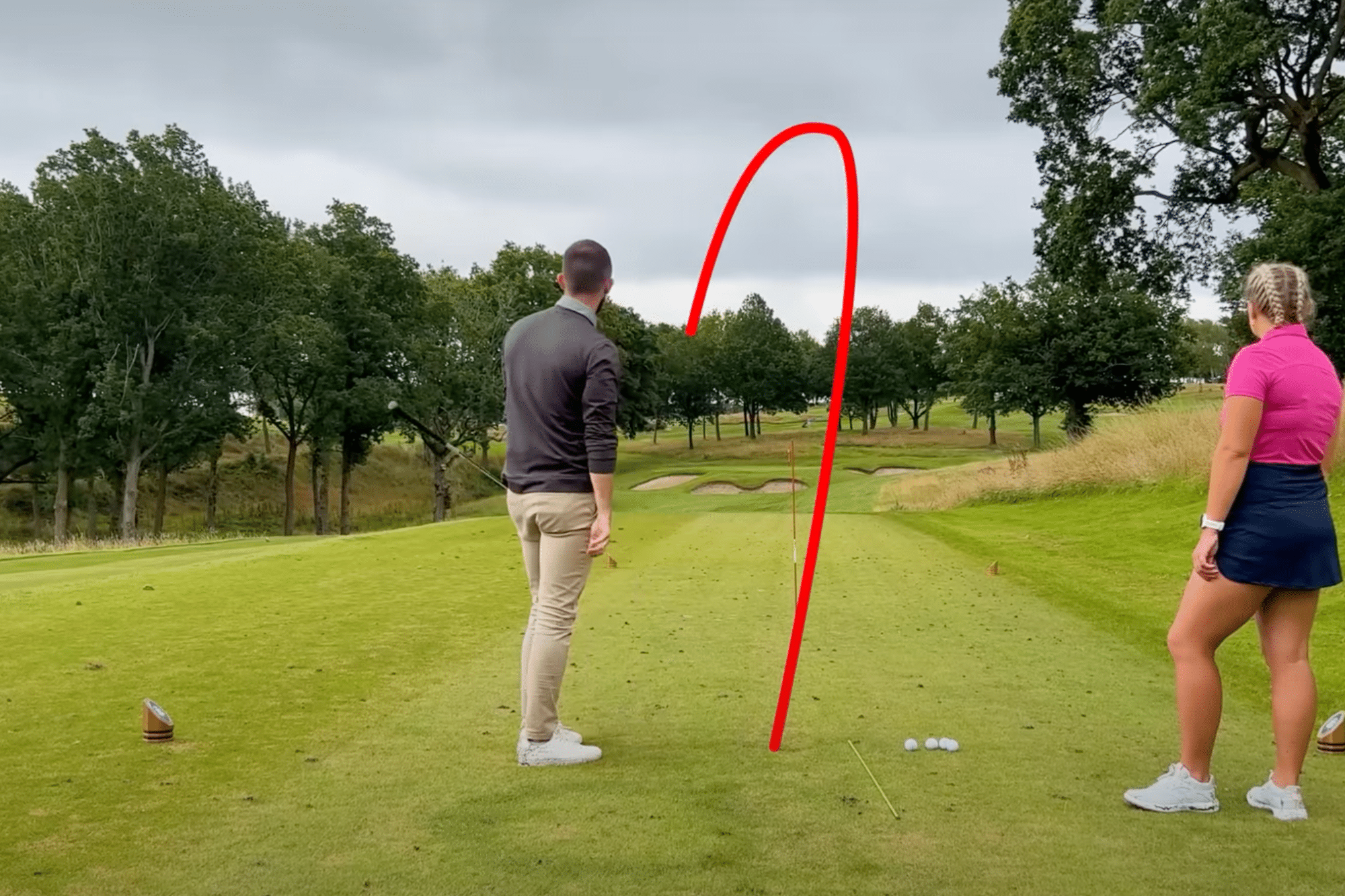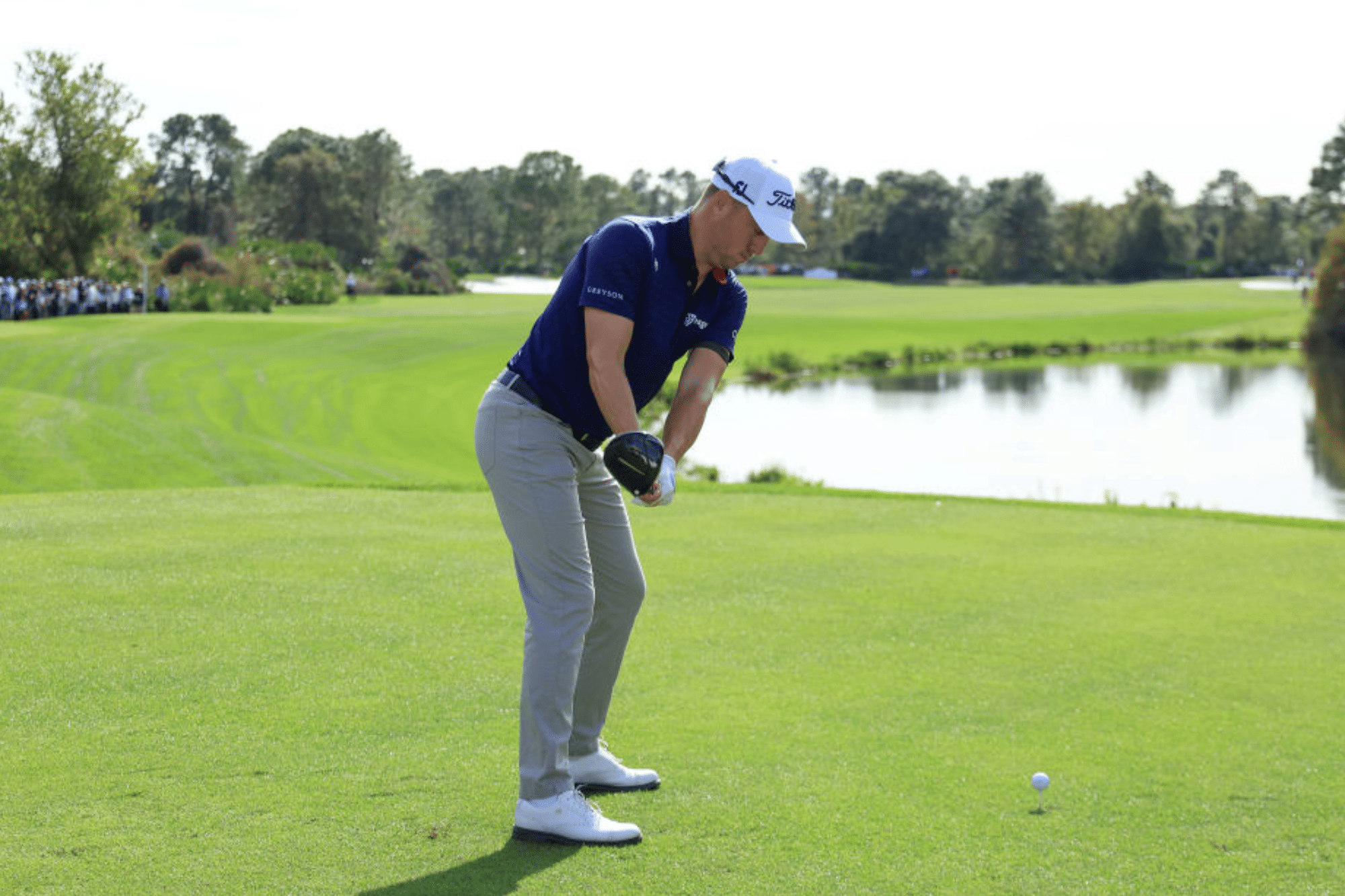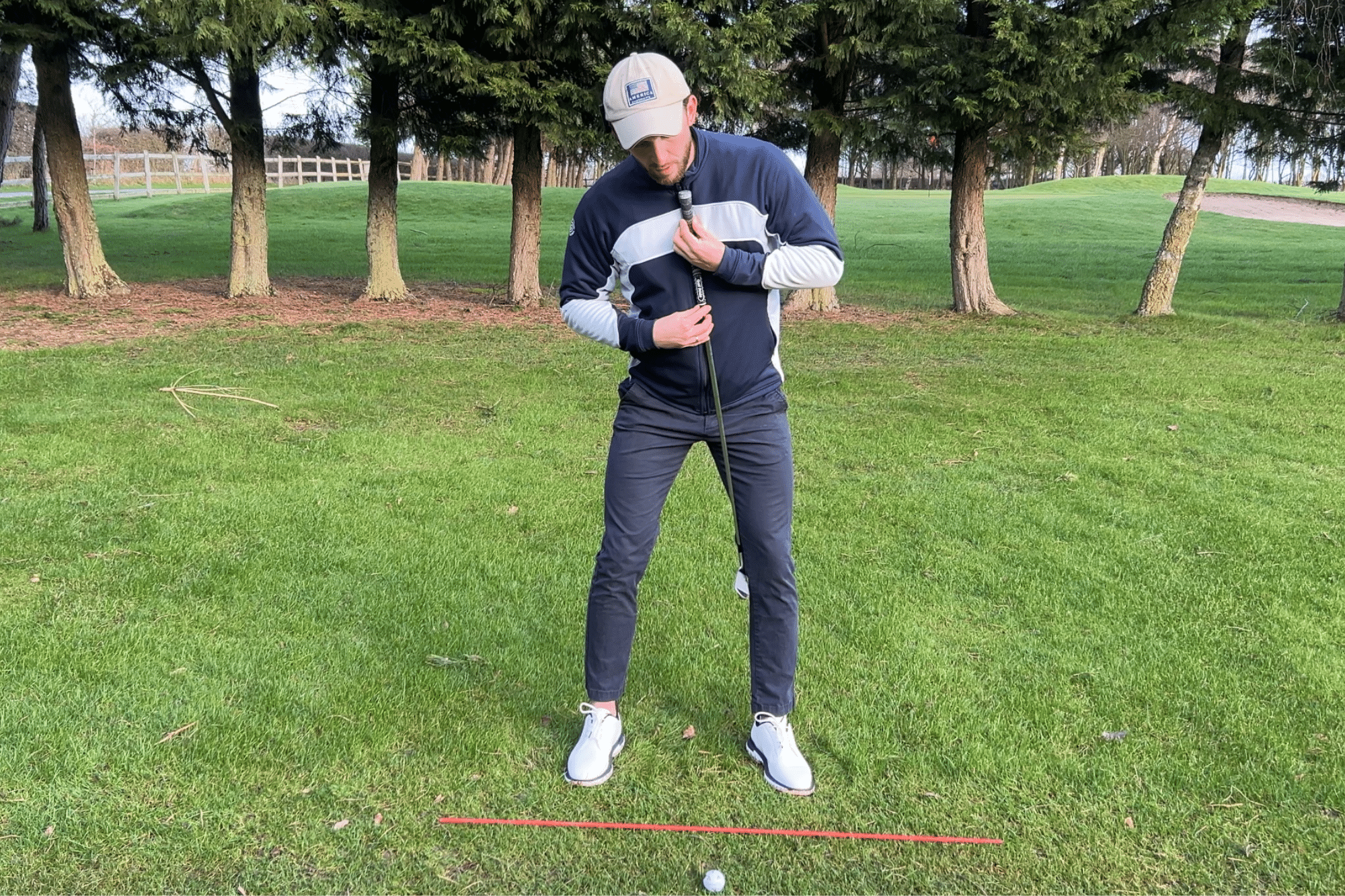
How to build speed through tempo like Oosthuizen
This week I’ve picked three clips from the Nedbank Golf Challenge.
Louis’s beautiful tempo
The smoothest swing in the game?#NGC2018 #RolexSeries pic.twitter.com/zyTfhNIWoe
— The European Tour (@EuropeanTour) November 8, 2018
Louis Oosthuizen’s tempo is unbelievable. Even when he’s hitting a driver over 300 yards he still looks like he’s swinging so smoothly.
It’s almost like some of these South African players have been born with this rhythm.
What do I like most about Louis’s move? It’s so uncomplicated to look at but he’s got great sequencing.
In the backswing, the arms are really nicely balanced with his body rotation. They sit just above his shoulders at the top which enables him to have a bit more speed on the way down.
His arms look long compared to his body. He wants them to sit slightly on top of the shoulders at the top to give that extra room on the downswing.

On the way through he uses the ground really well. He initiates the transition from the ground up then accelerates around his body.
Because his arms and his body motion are so well matched, when he turns his body it doesn’t appear to be a violent move. Rather, it’s a gentle build up of speed.
Louis is not a big guy by modern standards. But he’s got a very stable base. He matches his arms to his body movement perfectly.
He also sets the wrists nicely in the backswing. It’s something a lot of long hitters do for extra distance.
Because he has generated that space in the backswing he’s got all the room he needs ensure that the club is never trapped.
What to practise: Figure out what sort of backswing is going to suit your body type.
Don’t rush the transition. Louis builds his speed up like a car moving through the gears.
He doesn’t go from first to fifth when he’s trying to hit it further. He’s still working up from one to five but is just doing it that little bit quicker.
Get check on your chips like Ross Fisher
Ross Fisher with ANOTHER chip-in.#NGC2018 #RolexSeries pic.twitter.com/l47oAgEaKH
— The European Tour (@EuropeanTour) November 9, 2018
When chipping, you have to assess the lie first. If you look at Ross Fisher here, the lie is quite tight. That lends itself to creating more spin.
The ball will strike the face a little bit lower and that will allow the ball to climb up the grooves towards the centre. This will increase the spin rate.
I always notice when playing abroad that the grass is different and the greens are a bit grainier. The ball react differently and it gets more spin.
It’s harder to get spin out of the rough because the ball impacts higher up the face.
The triangle Fisher creates between his arms his chest and the club is maintained throughout. As is the club remaining outside his hands – he doesn’t let the club pass his hands.

I see a lot of amateurs trying to help the ball up into the air and that’s a killer when trying to get spin.
Unless you have got a nice, tight lie then you can’t rely on spin to get the ball close on short shots.
Instead, you’ve got to control the height of the shot.
What to practise: Amateurs often try to cut across the ball when trying to get check. That just puts more side spin on it. They use their arms more than their bodies.
They aren’t working as a unit so are dragging across the ball with their arms.
They are trying to get spin through aggressive speed.
My suggestion is that you should focus instead on two things: one, where your low point is – it needs to be after the ball; and two, ensuring a good connection.
Dan Whittaker is an elite golf swing and performance coach based at High Legh. For more information, visit his website.

What we can learn from Rose’s range drill
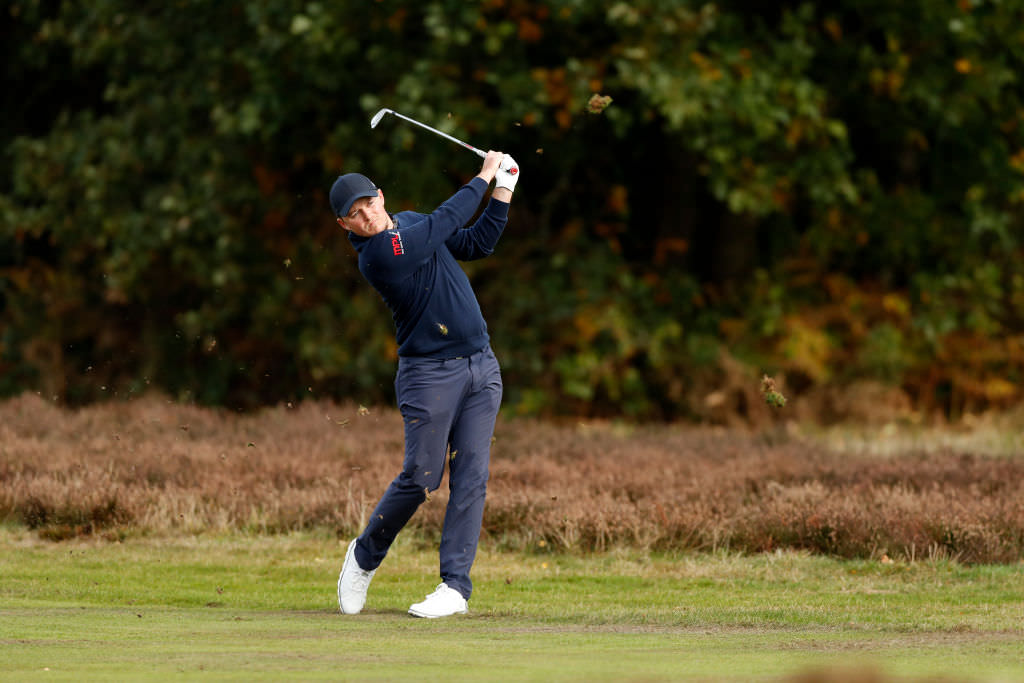
How Pepperell’s passive clubface helps him shoot lower scores
Tom Irwin

Tom is a lifetime golfer, now over 30 years playing the game. 2023 marks 10 years in golf publishing and he is still holding down a + handicap at Alwoodley in Leeds. He has played over 600 golf courses, and has been a member of at least four including his first love Louth, in Lincolnshire. Tom likes unbranded clothing, natural fibres, and pencil bags. Seacroft in Lincolnshire is where it starts and ends.




